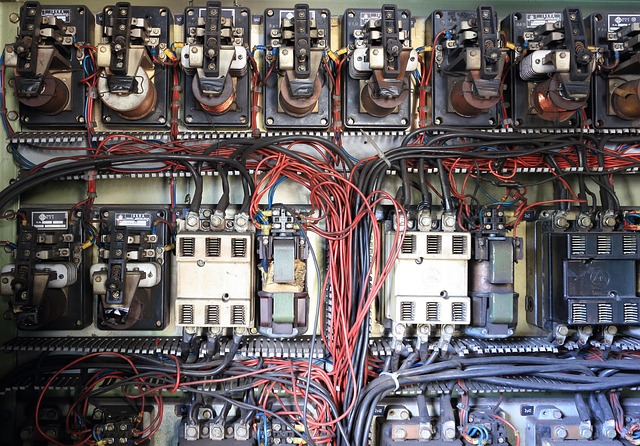Power distribution CAD modeling leverages 3D simulations and advanced algorithms to visualize and optimize complex power networks. Integrating photorealistic renderings enhances design communication, enabling stakeholders to understand intricate wiring and aesthetics before construction. This technology streamlines project management, facilitates issue identification, and ensures reliable electrical system design across diverse applications.
“Revolutionize how you visualize electrical systems with photorealistic renderings, a game-changer in engineering visualization. This article explores the art of bringing intricate wiring layouts to life through cutting-edge CAD modeling techniques. From enhancing visual communication to ensuring aesthetic and functional accuracy, we delve into the process of creating realistic power distribution networks. Learn about advanced rendering strategies that not only simplify complex systems but also elevate their presentation, making every detail crisp and visible.”
Photorealistic Renderings: Visualizing Electrical Systems
Photorealistic renderings have transformed how we visualize and communicate complex electrical systems, especially in the realm of power distribution networks. These highly detailed digital visuals bring intricate wiring layouts to life with remarkable accuracy, bridging the gap between design concepts and physical installations. By employing advanced CAD modeling techniques, engineers can craft three-dimensional models that mimic real-world conditions, allowing for comprehensive analysis and improved project management.
This innovative approach enables stakeholders to gain a deeper understanding of electrical systems before construction begins. Through photorealistic renderings, potential issues can be identified, design iterations refined, and client expectations better met. With its ability to showcase intricate details and variations in power distribution networks, this technology plays a pivotal role in enhancing the efficiency and effectiveness of infrastructure planning and development.
Power Distribution Networks in CAD Modeling
Power Distribution Networks (PDNs) form a critical component in any complex electrical system, ensuring the efficient and safe transmission of electricity across various components. In the realm of Computer-Aided Design (CAD) modeling, PDNs are meticulously represented using advanced software tools that allow engineers to create highly detailed, photorealistic renderings of these intricate systems. This process involves integrating sophisticated algorithms and simulation techniques to model the behavior of power flows, voltage levels, and current distributions within the network.
By leveraging CAD software, engineers can design, visualize, and optimize PDNs with unprecedented accuracy. They can create 3D models that depict every conductor, connector, and component, enabling thorough analysis and testing before physical prototypes are built. This digital simulation facilitates informed decision-making, allowing for the early identification of potential issues related to capacity, compatibility, or safety. Ultimately, power distribution CAD modeling ensures that electrical systems not only meet but exceed industry standards, contributing to more reliable and efficient operations in a wide range of applications.
Wiring System Aesthetics and Functionality
Photorealistic renderings offer a unique opportunity to showcase not just the functionality but also the aesthetics of electrical layouts and wiring systems. While traditional 2D drawings focus primarily on technical specifications, rendering allows for a more immersive visual representation. By integrating power distribution and CAD modeling, designers can create detailed, realistic images that convey both the complex wiring configurations and the overall design appeal.
This dual aspect—functionality through clarity and aesthetics through visual allure—is vital in various industries, from residential to commercial spaces. Realistic renderings facilitate better communication between stakeholders, ensuring everyone understands the intricate workings of the electrical system. Furthermore, they contribute to the overall user experience by providing a glimpse into how the final product will look and function, fostering confidence in the design and implementation process.
Advanced Techniques for Realistic Representations
The evolution of photorealistic renderings in electrical engineering has been transformative, thanks to advanced techniques that bring intricate wiring systems and layouts to life with remarkable accuracy. By integrating power distribution networks into CAD modeling processes, engineers can now create detailed, three-dimensional representations that mimic reality almost perfectly.
These sophisticated methods involve utilizing cutting-edge algorithms and rendering engines to simulate the visual behavior of light interacting with electrical components. Refining materials, textures, and lighting conditions allows for a realistic depiction of cables, connectors, and switches, enhancing the overall visualization experience. This level of realism not only aids in design validation but also facilitates effective communication among project stakeholders, ensuring everyone involved has a clear understanding of the final product.
Photorealistic renderings of electrical layouts have evolved, transforming static schematics into dynamic visual aids. Integrating these visuals into CAD modeling, particularly through advanced power distribution networks, enhances design accuracy and communication. By focusing on both aesthetics and functionality in wiring systems, professionals can create not only technically sound but also visually appealing electrical infrastructures. Advanced techniques, such as detailed material properties and lighting simulations, further elevate the realism, making complex electrical systems more accessible and better understood.
